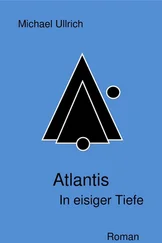Rick Chesler
Atlantis Gold
Great Pyramid of Giza, 1938
Selam Hasim was lost.
He knelt on the stone floor of the chamber, somewhere deep within the great pyramid, and smoothed out a map on his knee while aiming a flashlight with his other hand. Drops of perspiration fell from his forehead onto the paper, pattering softly in the near silent space. The confusing array of mapped passages, rooms and chambers made his head spin as he tried to reconcile where he presently found himself with the hand-drawn diagram.
The room he thought he must be in had two exits, while the space he actually found himself in clearly only had one. So that must not be it, he thought, wiping the sweat from his forehead with a shirtsleeve. Unless Hamar made a mistake with the map . He shoved aside the grim thought and glanced at his wristwatch. The time of day meant little to him, for down here in the depths of the fantastic Egyptian structure, it was always dark. But the fact that nearly two hours had elapsed since he’d left his expedition’s camp was most disconcerting indeed. He needed to get back before his associates noticed he was gone.
As an archeologist on a large, well-outfitted expedition from the University of Cairo, Selam was part of a professional team devoted to thorough, methodical study of the ancient wonder. Not all of the pyramid had been mapped yet, since new areas were still being discovered, and those lesser known sections were strictly off-limits to everyone. Selam was well aware of this rule, but had deliberately strayed from the authorized dig areas nonetheless. One major reason for this policy was safety; many of the pyramid’s passageways had to be buttressed with contemporary building techniques to brace the walls, ceilings and floors against collapses and cave-ins. Another reason, Selam knew, was that disturbing a new area without observing proper archaeological technique would compromise the integrity of the site. One wouldn’t know whether items had been laying as they were for millennia, or if their positioning was due to the recent disturbances.
He looked around the space again, to see if he had missed something. Sometimes new passageways were discovered, but then blocked off by moving stones back into place to prevent unauthorized persons from exploring them. But aside from the engineered tunnel that had led him to this room — what he thought had to be a subterranean space, beneath the actual ground the pyramid sat on — he saw only four walls, a floor and a ceiling, all constructed from the same solid stone blocks as the rest of the pyramid. It was of course a marvel of human engineering that the Egyptians had been able to cut, transport and move all of these blocks into place to build such a lasting structure, but Selam was currently concerned with much more pressing matters.
He stared down at the map once again, panic beginning to well in his gut. If I’m not in this room here, then where the hell am I? He traced the tip of a finger along the solid lines indicating horizontal passages, the dotted lines representing the vertical. And then it hit him — hard.
You’re in a new chamber.
He’d been looking for a room that was known to contain artifacts that had not yet been catalogued. The pyramids and other ancient sacred sites had long been the target of looters, and truth be told, Selam was not above making a an extra buck or two. If he could get to the off-the-books artifacts quickly enough, they were ripe for the taking and would fetch him a pretty penny in the black market antiquities trade. But his interest here today was something special. Even so, he had ended up in a different area altogether, an uncharted space. He was about to retreat back into the passageway that led him here when his gaze lit on a wall-mounted figurine of a pharaoh’s bust.
These were not uncommon throughout the pyramid, but still, it could be worth something. Since he’d likely never get another chance to be in this chamber again, at least not alone, he crossed the room to take a closer look. Carved from a single block of quartz, the bust was about eight inches high by four wide. It protruded out from the wall by several inches.
Salem directed the beam of his flashlight all around the statuette where it contacted the wall. He did not want to break it or even chip it. The less marred it was as a result of being extracted from its original location, the more money it would be worth. Still, he had not the time to be as thorough as he knew he should be. He thought something looked a little odd about how it was set into the wall, something about the groove thickness. Usually the joints were tight enough not to permit a human hair inside, but these were much wider.
With a shrug, Selam put a hand on the figurine’s head. He pulled it gently to the left, and then right, feeling no play whatsoever. Wide grooves or not, he surmised, the construction — even after the passing millennia — was robust, holding up as well as the rest of the impressive pyramid.
You’ve no time for this, you need to get back to camp . It kept running through his head like a mantra, but something about the symbolic head transfixed him. He repositioned his grip on the ornament and pulled it upward. Nothing. I’ll try one more thing. Selam pushed down on the figurine’s head.
The barest puff of stone dust drifted down from behind the ancient wall fixture. Then the stone figure began to slide down along the wall. The sound of stone grating on stone reached Selam’s ears, lighting a smile on his face. It was coming loose. The artifact would be his for the taking.
The mounted figure came to a sudden hard stop when it reached the bottom of its groove in the wall, and Selam yanked it outward, expecting the object to pull free from the wall. But instead he felt the floor begin to shake.
Selam whirled around and looked at the rest of the room. The stone tiles were in upheaval, undulating all the way from where he stood to the chamber entrance. He felt the figurine come loose in his hand but he let it drop, no longer caring what the historical bauble might be worth.
Curious to see if a new doorway had opened up in front of him, he looked back to where the figurine had pulled away. Nothing new, except for the deep crack where it had been. He mentally kicked himself for triggering what appeared to be some sort of trap. I have to get out of here right now!
But when he spun back around his heart sank. Getting out of here wasn’t going to be a given. The first row of large square floor blocks had…disappeared! But not disappeared, Selam could see. There was now water in their place. They had sunk. As he watched, more water flooded into the chamber, and the next row of floor tiles dropped beneath the raging waters.
Even as he stepped out onto the tiles that still remained, he had trouble maintaining his balance, as they were all in motion. He went down hard on one knee before regaining his balance in time to see another row of tiles sink away. The last remaining row was the one on which he stood, and that was much too far from the passageway to jump to it. At least the passage was still dry, he could see, since it angled up and away from this underground chamber. But how to get to it? He glanced around at the walls and ceiling. They hadn’t changed, but they also offered no obvious means of escape. Comprised entirely of smooth stone with no cracks, hand- or footholds of any kind, they offered zero hope of climbing.
But there was plenty of water, which meant that he was going to have to swim. Selam shuddered at the thought. Growing up in Egypt, surrounded by desert sands, swimming was not something he had done a lot of. He had distant boyhood memories of splashing around in the shallow waters of the Nile, but the chaotic turbulence of rising floodwaters in the chamber was not something he was prepared to deal with.
Читать дальше











